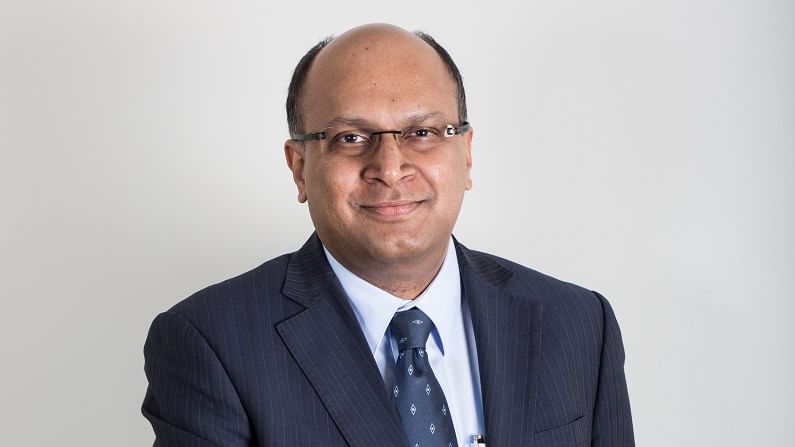Growth prospects attracting investors into equity funds in a big way: G Pradeepkumar, Union AMC
The steps taken by Sebi have certainly made mutual fund investments more transparent and less risky

Union AMC has completed a decade in the Indian mutual fund industry and has seen many economic and market cycles as well as major changes in the regulatory framework. In an interview with Money9.com, G Pradeepkumar, Chief Executive Officer, Union Asset Management Company recounts the journey and provides insights on what lies ahead for the mutual fund investing community. Edited excerpts:
Union AMC has been around for a decade now. How has the journey been and what are the key learnings for you and how has the investment landscape changed during the period?
The journey of a decade for Union Mutual Fund can be seen in two phases. The first was when KBC Participations Renta, a 100 subsidiary of KBC Asset Management NV, was our partner and the distribution model was to reach out to investors predominantly through the Union Bank branch network. The second phase started in 2018 when Dai-ichi Life Holdings Inc. of Japan, became our co-sponsor. We have now been more focused on distribution of our products through non-Union Bank channels, especially through Mutual Fund Distributors (MFDs). MFDs are a vital channel for any AMC to scale up business. One of the significant steps that we took was to set up dedicated sales vertical that would cater exclusively to MFDs.
In 2018, under a new Chief Investment Officer (CIO), we put in place a robust new investment process both for fixed income and for equity. We believe in an investment philosophy where process clearly has precedence over individuals.
Over the last decade there have been significant changes which have brought a lot more clarity on scheme portfolios, one of them being categorisation of schemes by Sebi. This has now laid out a clear choice for investors. Other regulations from time to time have contributed to augmenting the investment landscape.
With competition intensifying in the MF industry, do you think investors get more options or will there be more confusion going forward?
Our belief is that there is scope for many more players in the industry. Many of them have differentiated philosophies and business models. In a vast country such as ours, it will be good to have players who can reach out to a wider audience through effective use of technology.
Investors are coming back into equity MF as the AMFI figures show. What are your key takeaways from the data trend?
It is very encouraging to see strong net inflows into equity funds again. Net flows have been positive for the past three consecutive months. In the earlier months of the pandemic, due to uncertainty regarding cash flows etc. a lot of investors stopped their SIPs. However, clarity about economic growth has emerged and has encouraged investors to come back to equity funds in a significant way. Investors seem to be more confident of the sustainability of the market growth. The total number of folios in the industry has crossed the 100 million mark for the first time.
How does equity investment compare with debt given that equity valuations are high while debt is giving negligible returns?
It must be noted that due to the pandemic interest rates across the world have come down significantly. Investors in bond funds have benefited significantly from this. At current levels, the accrual levels are relatively very low. While we expect a soft interest rate regime to prevail in India in the near term, the kind of returns seen in the last two years are unlikely to be repeated. However, when compared against bank deposits, certain categories of debt funds may still offer a good risk/return value proposition.
Equity is an asset class that has the longest duration. Interest rate movements have a bearing on equities as well. A gush of liquidity on account of loose monetary policy by central banks across the world has also contributed to stock prices trading above their fair value.
Sebi has taken many steps on debt funds including bringing about new risk parameters. What impact do you see on fund houses of these measures and what would be the impact on investors?
The steps taken by Sebi have certainly made mutual fund investments more transparent and less risky. Laying down risk levels that the scheme can take and disclosing it upfront to investors help to avoid any unpleasant surprises later on. A number of steps have been taken to manage the liquidity risk in the debt funds which will help the funds to be more resilient. We are of the view that these steps should help to attract more investors into debt funds.
Your fund house has been conservative with scheme offerings. What new product launches are in the pipeline?
We like to launch a new product when we believe there is a differentiated value proposition that can be offered to investors. Of course, it is important for us to offer a wide choice of funds to customers, but, we do not believe we have to be present in each and every category that Sebi has allowed. We are not a great believer in launching sector funds since we believe that the potential of generating long-term value is limited in the case of sector funds. However, we would be open to launching thematic funds if we can find themes that are sustainable over the long term.